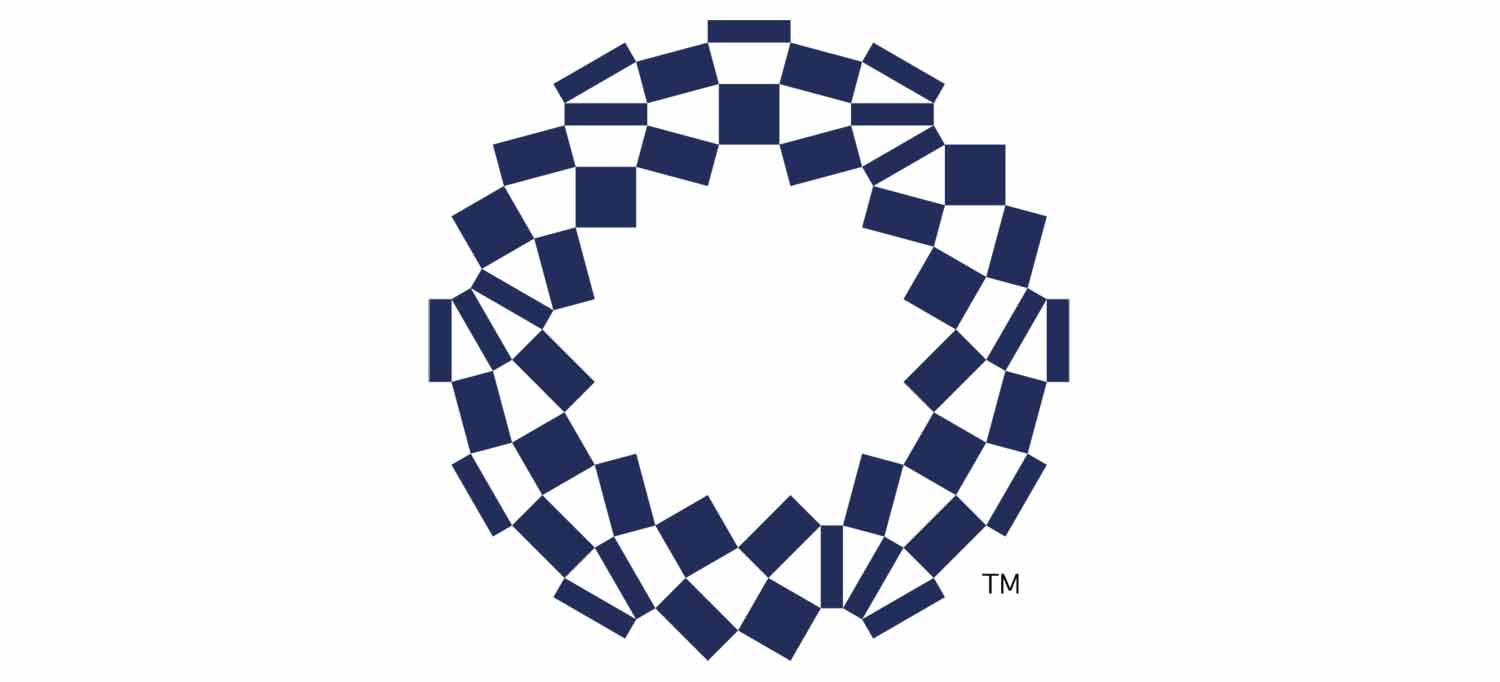After Novak Djokovic won the Australian Open 2020, charts like the one by below by the German Data Journalist Felix Richter were likely almost covered by any major sports magazine in the world (at least the ones who touch tennis at all). Since 2005 three players, Swiss Roger Federer, Spain’s Rafael Nadal and – of course – Serbian Novak Djokovic have won 52 out of 61 Grand Slam tournaments – why they are simply reference as the Big Three.

To me as a mathematician, who likes to play with numbers and statistics, I felt to feel: is this really unique? Thus, I did some quick analysis of other decades in tennis – the result is simply: yes, it is! At least, due to the many US Open withdrawals this year, there is a high chance that we can add another orange entry to the statistics above soon. Or will it be an easy one for the “Djoker”?
Tennis Grand Slam Winners – What I Did
I did not look too much into this 15 year streak (in fact, you could say that the streak above started with the 2005 French Open to eliminate Marat Safin) and shorter ones, but I just grouped and counted the Grand Slam Winners by decades. In order to have a clear definition: the 2000’s, for example, represent the years 2000 to 2009. Within one decade, I counted the number of winners as well as looked for dominance. Regarding the dominance of the Big Three, my reference period are truly the 2010’s, in which there have only been six male Single Grand Slam Winners at all, Novak Djokovic (15), Rafael Nadal (13), Roger Federer (5), Stan Wawrinka (3), Andy Murray (3) and Marin Cilic (1).
There were some years, in which the tournaments did not take place (e.g. due to war). In 1977, the Australian Open have been played twice, in January and December. The December 1977 Women’s Double had a split winner, as they could not play the final due to bad weather. I will have a short look into doubles and mixed tennis. For that statistic, I counted the individual athletes, not the doubles teams.
Big Three Tennis Dominance in Male Tennis – Unique?
If you exclude the very early stages of tennis when British William Renshaw dominated Wimbledon as well as Richard Sears had a streak of seven victories at the US Open, a number of only six players winning a Grand Slam in one decade is truly unique. The 2000’s, for example, had fifteen winners, which is a quite average figure over all decades. Roger Federer indeed won 15 Grand Slam titles in this era, but there were a lot of other players who did so as well, especially int the earlier years. Before the 2010’s, the lowest number of Men Single Grand Slam winners was twelve in the 1980’s, with dominating Mats Wilander and Ivan Lendl (7 each) and John McEnroe with six titles.
Djokovic’s 15 titles in one decade tied with the same figure for Federer the decade before. Before that, only Roy Emerson hit the double digits with twelve victories in the 1960’s.
Tennis Dominance – What about the Ladies?
In Ladies’ tennis, there has been a quite similar period in the past as well: during the 1980’s, only seven players were able to win a Grand Slam tournament – and they had a Big Three as well: Martina Navratilova won 15 titles during that time (amazing that this figure pops up again and again), Chris Evert-Lloyd had nine and Steffi Graf 8 titles. Hana Mandlikova (4), Aranxta Sanchez Vicario, Evonne Cawley and Tracy Austin complete that list. There was even a very similar streak at the ladies to the current one at the men’s side – not quite as long, but only six tournament winners in a twelve year period with dominating Navratilova (15) and Graf (14):
| Year |
AUS Open |
French Open |
Wimbledon |
US Open |
| 1982 |
C. Evert-Lloyd |
M. Navratilova |
M. Navratilova |
C. Evert-Lloyd |
| 1983 |
M. Navratilova |
C. Evert-Lloyd |
M. Navratilova |
M. Navratilova |
| 1984 |
C. Evert-Lloyd |
M. Navratilova |
M. Navratilova |
M. Navratilova |
| 1985 |
M. Navratilova |
C. Evert-Lloyd |
M. Navratilova |
H. Mandlikova |
| 1986 |
No tournament |
C. Evert-Lloyd |
M. Navratilova |
M. Navratilova |
| 1987 |
H. Mandlikova |
S. Graf |
M. Navratilova |
M. Navratilova |
| 1988 |
S. Graf |
S. Graf |
S. Graf |
S. Graf |
| 1989 |
S. Graf |
A. Sanchez-Vic. |
S. Graf |
S. Graf |
| 1990 |
S. Graf |
M. Seles |
M. Navratilova |
G. Sabatini |
| 1991 |
M. Seles |
M. Seles |
S. Graf |
M. Seles |
| 1992 |
M. Seles |
M. Seles |
S. Graf |
M. Seles |
| 1993 |
M. Seles |
S. Graf |
S. Graf |
S. Graf |
There were other dominant players in a decade, like Magaret Smith (13 titles in the 1960’s) or Steffi Graf in the 1990’s (14 titles). Despite the dominance of Serena Williams (12 titles) in the 2010s, the list of Women Singles Grand Slam Winners is huge (19 winners, the highest number since the 1900’s) – and with 2020 Australian Open winner Sofia Kenin, there is another Grand Slam winner debut on the list of the ladies.
Tennis Dominance – Doubles and Mixed
I did analyse the three doubles disciplines as well – but you can make a short message out of that: there is hardly any effect like that on the doubles side. Even though Mike (11 titles) and Bob Bryan (9 titles) dominated the 2010’s, for example, there are 37 additional men on the list, who lifted a Grand Slam Men Doubles trophy during that period. If you say the 1970’s are the beginning of the “Modern Era” of tennis, this figure does not move too much. This also illustrates the struggle of the doubles players: even if you are world class, you generally earn less when you win a tournament – but even on top, the chance of grabbing the “big pot” is significantly lower than for the singles colleagues.
Some Women Doubles Dominance in the 1990’s
There were 37 different winners on the Women Doubles Tennis side in the past decade. However, in the 1990’s, there was some more dominance in the victory roll – only 18 players made it to that list, due to dominating Natallja Swerawa (17 titles), Gigi Fernandez (16) and Jana Novotna (11). In general, the women doubles tennis scene seems to have been more concentrated in the past, the number of winners is typically lower than at the men’s side. On the Mixed Doubles side, the list of players is huge, with 48 entries in the 2010’s and 49 in the 2000’s. Even dominating players like Bob Bryan in the 2000’s or Leander Paes in the 2010’s just make it to six victories in a decade.
Does Dominance Harm Tennis / Sports?
Naturally, tennis has been booming in the late 1980’s in Germany due to the Boris Becker and Steffi Graf era. Nowadays, the sports takes a significantly more subordinate role in media. I would, however, not see that caused by the Men Big Three dominance. There is a natural media concentration on Federer, Djokovic and Nadal on the men side – my personal point of view that an additional reason is some of the other players lack profile. Tennis sells the “Battle of the Giants” on the Men side (which is still too over-represented compared to the Ladies and Doubles) – and this works out as long as the giants are competing against each other. It will be interesting how it will impact tennis when the Big Three retire. Will it be some sort of depression for the sports – or will it free capacities as it has to focus on new players?
A more critical factor to me is money. If you look into a prize money table (here: US Open 2020), tennis is majorly paying out cash to the winners:
| Stage (Men/Women Singles) |
USD |
| Winner |
3,000,000 |
| Runner-Up |
1,500,000 |
| Semifinal |
800,000 |
| Quarterfinal |
425,000 |
| Round of 16 |
250,000 |
| Round of 32 |
163,000 |
| Round of 64 |
100,000 |
| Round of 128 |
61,000 |
The total payout of this year’s tournament is roughly 19.5m USD for Men Singles – this also means that approximately 23% of the tournament prize money is paid to two out of 128 contestants – the winner and the runner-up. The 2019 payout was even higher, with the winner cashing in 3.85m USD. If you have dominance in sports which pays his athletes like that, this may harm the potential of the following players to be competitive. As at the time of writing the posting (August 2020), I compared the Big Three’s career price money with athletes of similar age in the table below:
| Athlete |
Age |
Career Price Money (USD) |
| Novak Djokovic |
33 |
143,631,560 |
| Roger Federer |
39 |
129,946,683 |
| Rafael Nadal |
34 |
120,955,904 |
| Andy Murray |
33 |
61,544,007 |
| Stan Wawrinka |
35 |
34,278,627 |
| John Isner |
35 |
19,081,320 |
| Jo-Wilfried Tsonga |
35 |
22,157,662 |
| Feliciano Lopez |
38 |
17,370,058 |
Undoubtedly, it is unfair to compare the (big) careers of Djokovic and Wawrinka. But the gap of the Big Three to the remaining tennis world is just huge. Statista also features a chart of ATP players by career price money (as of March 2020). Andy Murray is indeed the player with the fourth highest career price money in total. You see the massive gap there. Of course, you can still fund a professional career with the budget of Stan Wawrinka, but you cannot argue against a lower economic potential. By the way, even dominating doubles players like Mike Bryan (42 years/16.7m USD) would by the way not make it into that statistics.
The Women Tennis Association WTA publishes a list of career prize money leaders. Based on the table I retrieved as of 17th August 2020, you see that Serena Williams is dominating in that, but the distribution of the money is much more diversified (table below shows the Top 8 all time). This should – at least in theory – lead to a much more similar-strength competition (which is the case nowadays, as you say):
| Athlete |
Age |
Career Price Money (USD) |
| Serena Williams |
38 |
92,720,122 |
| Venus Williams |
40 |
41,808,806 |
| Maria Sharapova |
33 |
38,777,962 |
| Simona Halep |
28 |
36,577,615 |
| Caroline Wozniacki |
30 |
35,233,415 |
| Petra Kvitova |
30 |
31,838,378 |
| Victoria Azarenka |
31 |
30,360,105 |
| Angelique Kerber |
32 |
29,526,500 |
Another side note is that only Halep and S. Williams are players, who are currently in the Top 10 of the WTA Singles rankings.
Sports Dominance – Other Sports
The male tennis streak is definitely impressive in individual sports, but it is not unique at all. One example (which is maybe even more dominant) you might be aware of is Women Luge. Here is the list of all athletes who won the Women Single Luge World Championship between 1962 and 2019 – with a very small constraint: the did not compete under any German flag (i.e. West Germany, GDR or reunited Germany athletes): Barbara Piecha (Poland, 1970), Vera Zozulya (Soviet Union, 1978), Gerda Weissensteiner (Italy, 1993), Erin Hamlin (USA, 2009). Full stop.
Vice versa, this means that in this series of forty World Championships (the event does not take place in Winter Olympic Games‘ years), German athletes won 36 titles (and by the way 30 Silver and 21 Bronze Medals). Luge may be a very different sports, as the facilities you need to train it competitively (bob tracks) are just limited to very few locations in the world.
If you look at more popular sports, the dominance of certain soccer clubs in their national leagues could be seen equivalent, like Bayern Munich just failing to win the German Bundesliga in five occasions since the 1998/99 season.
Postings about Tennis
Here are all postings which are related to tennis on Flyctory.com

has come to an end - and my Best of posting is the one which is "traditionally" concluding the year. The ...

You cannot over-estimate the performance of German Viktorija Cesonyte. After she won the almost three hour girls singles final at ...

After the epic girls singles final, the boys went to decide their singles winner in Düren. At the Internationa German ...

After the dramatic girls singles final, the second match I present you from the Tennis Europe Super Category tournament in ...

On 3rd August 2024, I headed to Düren, some 50 kilometers West of Cologne. My aim was to cover the ...

Apart from being ill, the week at the Infosys Hall of Fame Open 2024 in Newport, Rhode Island, has truly ...

The men's singles final, held on 21st July 2024 at the Infosys Hall of Fame Open in Newport, was a ...

The first match on the last day of the Infosys Hall of Fame Open has been the doubles final. At ...

After I had to skip the whole Friday at the Infosys Hall of Fame Open due to sickness, I was ...

After the Indians Chandrasekar and Kadhe advanced to the doubles' semifinals, I headed straight to Center Court of the Infosys ...

After their promising first round victory, the Indian doubles pairing Ariundh Chandrasekar and Arjun Kadhe had to play their quarterfinal ...

The big moment is coming closer. On Thursday, 18th July 2024, the three inductees into the International Tennis Hall of ...
![Hall of Fame Open 2024 - MD R1: A. Goransson (SWE) / S. Verbeek (NED) - J. Paris (GBR) / R. Ramanathan (IND) 6-3 4-6 1-x [10-8]](data:image/gif;base64,R0lGODlhAQABAAAAACH5BAEKAAEALAAAAAABAAEAAAICTAEAOw==)
The last Indian player to kick off duties at Newport was Ramkumar Ramathan. Getting into the men's doubles main draw ...
![Hall of Fame Open 2024 - MD R1: Lemmins / Withrow (USA) - Chandrasekar / Kadhe (IND) 3-6 6-3 x-1[7-10]](data:image/gif;base64,R0lGODlhAQABAAAAACH5BAEKAAEALAAAAAABAAEAAAICTAEAOw==)
After Rithvik Choudary Bollipalli and Niki Kaliyanda Poonacha had already bowed out of the Infosys Hall of Fame Open 2024 ...

For the last Infosys Hall of Fame Open match I featured on Tuesday 16th July 2024, I went back to ...

Tuesday, 16th July 2024, also kicked of the men's doubles competition at the Infosys Hall of Fame Open 2024. The ...

Around 100 degrees Fahrenheid and high humidity - the Indian team Rithvik Choudary Bollipalli and Niki Kaliyanda Poonacha could not ...

After having had a look into the men's singles main draw match of Mayot and Kovacevic, I went back to ...

First day of the main draw - Monday, 15th July 2024, did not only feature the first matches of the ...

On 14th July 2024, I finally reached the holy grounds of the International Tennis Hall of Fame. The Infosys Hall ...

The first day at the Infosys Hall of Fame Open also featured one match which was interesting from an Indian ...

Since a couple of years, I have a group of so-called Featured Artists - musicians, which are in a special ...

In the life of a sports fan, there are those days you simply remember. Great victories and upsets, huge disappointments, ...

Tennis is back on lawn these days - and this also means that professional tennis players and tennis fans are ...

A 75k ATP Challenger right next to the city where I grew up? Troisdorf near Bonn and their tennis club ...

If you know me or follow my website, you also know that I might not be the biggest tennis fan ...

The last posting of the year - Best Ones 2022 is introducing you to my best experience last years (as ...

After Norway took the straight lead on Day 1, they were almost mandated to get to the Qualifiers of 2023 ...

Crunch time on day 1. Some of the hosts felt very sure that Casper Ruud's appearance in Lillehammer might be ...

One year after being with the Indian team in Espoo, Finland, I was so flattered that it was Davis Cup ...

There is one guy which gave me the initial crush with Indian tennis - Leander Paes. But in fact the ...

Covid-19 and the corresponding social distancing rules make it rather hard to meet with the team before and interact with ...

Hard to argue against that Finland was in the comfort position at this World Group I playoff tie in Espoo ...

Tennis Davis Cup again. I was really flattered about the first day in Espoo between Finland and India. Will there ...

My team is back in Europe! Three years after the Davis Cup tie in Serbia, I am glad to support ...

The Summer Olympic Games 2020 in Tokyo are over. Two weeks of intense sports coverage are lying behind us. Definitely ...

The Big Three of Tennis - Roger Federer, Novak Djokovic and Rafael Nadal - dominate their sports since ages. Hard ...

Undoubtedly, Indian sports and especially Indian tennis is maybe the biggest (sports?) love of my life. This even beats my ...

After I interrupted my "regular" series of Songs of My Life for the Christmas edition with Tiny Tim, the first posting ...

After praising my favorite songs of 2020 and the favorite albums and EPs in 2020, the final posting to do ...

Give us this day all that you showed me // The power and the glory // 'Til my kingdom comes ...

A typical scene at the bett1HULKS tennis tournament during the last two weeks at Cologne's LANXESSarena: Alexander Zverev (who swept ...

After the Divij Sharan as the last Indian player had bowed out of the tournament the day before, I could ...

Third seeded Dennis Shapovalov (Canada) had a tough time in his Cologne debut appearance: against Gilles Simon (France), he struggled ...

After German Alexander Zverev swept his Australian opponent John Millman in the bett1HULKS Championship 2nd round singles match in the ...

Unfortunately, my work schedule on the Championship week Wednesday was a bit busy, so that I had to rush from ...

German wildcard Dennis Altmaier was almost swept by Belarus qualifier Egor Gerasimov. I just saw the second set - the ...

Right before Sumit Nagal's match against Kecmanovic, I had at least the chance to have a short spot on the ...

Second week in the Cologne LANXESSarena, second tournament: more or less in parallel to the first week tournament victory by ...

After having three doubles matches on the minor Court 1, including Divij Sharan's first round loss, I dared to watch ...

This first round Men's Doubles match on Court 1 was in fact the first match I saw on 14th October ...

I just stayed on the smaller Court 1 after Divij Sharan's 1st round match at the bett1HULKS Indoors in Cologne ...

Due to all the Covid-19 regulations and local restrictions the male tennis ATP Tour set up some new tournaments in ...

While I so far made an semi-annual look back in time, the "Very Important Postings", I decided something with my ...

On the fourth day of my Weird Al & Grass Court Tennis trip in July 2019, I visited the Tennis ...

After having two Weird Al Yankovic concerts on the second and third day of my trip, tennis was in focus ...

After I did my very first trip report on Flyctory.com about following Weird Al Yankovic on his "Ridiculously Self-Indulgent, Ill-Advised ...

Another six months have passed - the first full half year of Flyctory.com's existance. After I did the Very Important ...

With the suprising Serbian doubles rubber upset on Day 2, the Sunday match just featured a dead rubber. It was ...

Trailing 0-2, India was under pressure for the second day which features the doubles. However, the guests having the best-ranked ...

The first day in Kraljevo: The teams' number ones were under special pleasure as it more or less their "mandatory" ...

Thursday evening in Kraljevo. The city some two hours away from Belgrade is ready for the Davis Cup playoffs. It ...

Though I am a huge opponent of the Davis Cup reformations becoming active in 2019, I have to give in ...

Many of you might watch the Tennis US Open at Flushing Meadows on TV. Some take-outs like interviews on the ...

I was looking forward to my second day of visit at the US Open. Divij Sharan's match was of course ...

My fifth visit at the tennis US Open is the shortest one - arriving on Thursday afternoon by British Airways ...

There have been so many discussions about Rio 2016. Not just about whether the country itself is able to stand ...

Tianjin, China. Tennis Davis Cup, one of my most beloved sports competitions. He was intended to be the hero, the ...
All “classic” blog posts
No reviews – just debating and certain topics – these are my “traditional” blog posts in the categories Just blogging, Just blogging on music and Sports Blogging:

At least I did not get any messages or other reactions about it - so I am not sure whether ...

I had the idea to this post when I sat in the American Airlines Admirals Club at Pittsburgh Airport (PIT), ...

Summer time is festival time. As there are more and more interesting shows coming up, I felt that it might ...

22 - a repdigit and thus a small anniversary in my Food I Had Onboard series. I have to admit that some ...

It calls itself The Ultimate Country Music Fan Experience and there is indeed likely no festival of that genre somewhere ...

After I shared my loyalty portfolio thoughts in March 2024 with you, it is time for an update. Especially the ...

Country To Country 2025 in Berlin is in the books. Three days and the kick-off Bluebird Cafe session are over ...

In exactly two weeks, on 6th March 2025, Country To Country (C2C) Berlin is kicking off with the The Bluebird ...

I recently forgot a name of a German country artist and had to google it. I started typically by looking ...

With my recent mileage run and the trip to the World Floorball Championship Qualifications in Italy, I had quite a ...

It all started in August 2019 - and it has become a key delivery of Flyctory.com since then. The Country ...

While quite a lot of traveling is ahead of me during the next weeks, November and December 2024 was rather ...

has come to an end - and my Best of posting is the one which is "traditionally" concluding the year. The ...

Time to look back to the Flyctory.com year of music, part 2. In my 30th December 2024 posting, I am ...

The first one of my Best of postings at the end of the year is always reserved for looking back to my ...

Like I did in 2023, I will kick off my looking back to the year 2024 with some travel facts ...

is coming to an end, and my series of year-end reviews are already in the making. I felt to do ...

Last Thursday has been a very special moment in the history of my blog Flyctory.com. I a sure most of ...

Exactly eight years ago, I flew SAS Scandinavian flight SK 626 from Dusseldorf (DUS) to Copenhagen (CPH). Not a really ...

While my 18th edition of the Food I Had Onboard just came with a limited number of trips rather widely ...

Another year, another time for Rock of Ages. Similar to the previous years, I disclose some of the international dates I ...

I did not have that much traveling during the last weeks - but as some major trips are ahead, I ...

After I already introduced you to the track events and the field events of the athletics meeting of the Heinz-Steyer-Stadion ...

After I did a review by sports of the 2020/21 Toyko Summer Olympic Games, I have been at the 2024 ...

I did this kind of posting for the 2018 Winter Olympic Games as well as for the 2020/21 Tokyo Summer ...

Oh, I traveled too much the last weeks again. Time for another Food I Had Onboard posting - this time also featuring ...

The highlight of my trip to the Infosys Hall of Fame Open 2024 was of course the Saturday evening ceremony ...

The big moment is coming closer. On Thursday, 18th July 2024, the three inductees into the International Tennis Hall of ...

A very special week lies ahead of me. On Saturday, I will fly over to Boston and drive on to ...

The same procedure as every year. The day when the NHL is releasing their match schedule for the upcoming season ...

I recently completed the 100th show of the musical Rock of Ages, while traveling to Munich for that reason. The musical ...

I had quite a lot of travel in recent times - so there is time for a new Food I Had ...

Wow, what an intense week. Flyctory.com felt like my former sports project, sport-live.net, the last ten days. So many match ...

The still rather cheap flight prices from Europe to New York City are tempting. However, if you book too early, ...

In a short amount of time small field floorball boosted from a hobby and youth version of the sports to ...

I'm back! After having skipped quite a few ones, due to physical and mental reasons, I am about to fly ...

Since a couple of years, I have a group of so-called Featured Artists - musicians, which are in a special ...

In my fifteenth edition of my Food I Had Onboard posting series, I have a quhttps://flyctory.com/tag/deutschebahn/ite nice range of flight and ...

At the time when I started writing this posting in early March 2024, Flyctory.com already featured reviews of over 320 ...

In early April 2023, I gave you an insight into my loyalty program strategy for 2023. The posting Thumbs up ...

France, Tunisia, Saudi Arabia and Malaysia - I am just coming back from a massive aviation trip, which is the ...

The seizure of operation by Everynoise.com made it necessary to reform my country music playlists. I already mentioned this one ...

Andreas Dorau is one of the artists I follow for the longest time in my life. In 1997, just when ...

Happy New Onbaord-Food Year! At least, there is one flight experience from 2024 in this posting already, a Lufthansa Business ...

Is it really New Year's Eve already again? The last day of the year? I am posting this one in ...

Yeah, I am still more of an album person. I feel that a long-play is still able to tell stories ...

It's time to look back to . After I shared my new format My Year in Travel with you the first time, ...

Let's try out something new: in addition to the Best of postings I present you at the end of the year, I ...

Unfortunately, I could not complete the Country Christmas Playlist this year due to technical issues. However, since the days become ...

When I wanted to work on 8th December 2023, preparing the base data for my two country music playlists, I ...

After my eleventh Food I Had Onboard posting majorly concentrated on two Lufthansa First Class legs between Frankfurt (FRA) and ...

And then, it were three. I already shared Christmas songs by country artists twice as a playlist. For the Flyctory.com ...

At the end of September, some miraculous things were happening on the Instagram accounts of the Country To Country Festivals ...

I felt it is a good time to publish my next episode of Food I Had Onboard in this week in ...

When Swiss International Air Line recently released the seat map of their new Airbus A350 fleet, a real advantage of ...

It is just mid-year 2023 and I already start working on my 2024 Rock of Ages International Tour list. I am sure ...

In the life of a sports fan, there are those days you simply remember. Great victories and upsets, huge disappointments, ...

Are we really in the double digits now? I am really happy about my "new" category Food I had Onboard. Also, ...

Even though I am German, I am not an overwhelming soccer (or, for major parts of the world: football) fan ...

I am surprised that it has never been there before, stated Jackson Dean, one of the four artists, who will ...

Home is where the heart is - I had the idea to this posting about my favorite cities of the ...

Last week, the NHL released their schedule for the 2023-24 season. This typically means a bunch of work to me, ...

After I gave you three postings about the music at the Seepark Biker Days 2023 in Pfullendorf already, it is ...

I am not a Harley rider and I will travel to Pfullendorf by rental car. But I am really looking ...

One more Food I had onboard until I have a full set of ten postings. Hope you also enjoy reading ...

This weekend will be a tough one, a very emotional one for me. After 52 shows with the British production ...

Iceland is definitely one of the countries I love to travel to most. The unique nature, a very interesting culture ...

Oops, I did it again. Just within about a month, I feel that I had a nice volume of flights, ...

I did a bit of an ESC week this week, featuring Guildo Horn's Guildo hat Euch lieb! in my Songs of the Week and ...

Eight days of traveling along the Icelandic Ring Road are done. The trip was just intense. My wife and I ...

Using public transport all over Germany for 49 Euro? Sounds like the perfect deal, especially if you are a visitor ...

I have to give in: the red carpet is not my favorite location. Nonetheless, I felt very thankful that after ...

A major part of optimizing your travel portfolio is to determine the loyalty program which suits best to you. Thereby, ...

The last legs of the 2023 Weird Al Yankovic European Tour, Rock of Ages shows, the Pittsburgh Penguins and many ...

Damn, it is already four years... And it is more than 2,750 postings since then. On 25th February 2018, I ...

Today is a very special day to me: Weird Al Yankovic is playing is first-ever concert in Germany tonight, at ...

Wow, it's already half a dozen of episodes. This time, I start my Food I Had Onboard posting with two ...

If you know me or follow my website, you also know that I might not be the biggest tennis fan ...

The last posting of the year - Best Ones 2022 is introducing you to my best experience last years (as ...

While the music market is more and more focusing on singles and even writes weird stories like Taylor Swift's "Top ...

Since I started working with Flyctory.com, I present you a list of my favorite songs at the end of every ...

I recently told you about my very different pandemic and post-pandemic (re)booking experience with different airlines. The level of service ...

March 2020 changed my life. Covid-19 temporarily took me quite a bunch of habits, which I felt to be essential ...

Just some ten days left until Christmas. Instead of my typical album preview, I this time go for a preview ...

Time for another episode of Food I had onboard. Between September and November 2022, I had some really interesting experiences, ...

I recently ran into a very interesting discussion of the German aviation travel channel Frequent Traveler TV. Lars Costen, the ...

The 7th November 2022 is one of these days I will hardly forget so quickly. In a Weird Al fan ...

Even though I haven't been overwhelmingly optimistic about success on the sports side of the Indian tennis team at the ...

After I rolled out the Country Christmas Playlist 2021 in late November that year, I am this time a bit ...

After I gave you an overview of 2022 European appearances of my favorite musical Rock of Ages, I felt to ...

Already the fourth edition of my Food I Had Onboard category. Even though my Covid-19 infection changed quite a lot of ...

Every year, some time in June or July, I am spending hours and hours looking into flight schedules, checking out ...

The Bergisch Coffee Table (Bergische Kaffeetafel) is a traditional meal, somewhere between a brunch and an afternoon tea. And: it ...

Early summer 2022. After the Covid-19 crisis feels to have come to a certain end, air travelers all over Europe ...

After my second posting about Food I Had Onboard in mid March 2022, I had a couple of interesting flight experiences ...

He was ready to make a few people happy. For one evening. Ready to be the star of a luxurious ...

After I got some quite nice feedback about my first Food I Had Onboard posting, I felt to continue this ...

I am quite sure I will never forget this 24th February 2022. Like I will know what I did on ...

The Winter Olympic Games 2022 are finished. I have to say, I am relieved. It may have been the two ...

Especially for tourists, Dubai rather means entertainment, luxury and posh shopping. Thus, having a boat ride in a swan-shaped pedal ...

Last week only, I had to cancel or rebook four trip due to Covid-19 related reasons. Three of them included ...

It is time for the final posting of the years, simply named The Best Ones 2021. After looking into my ...

2021 definitely lifted Flyctory.com to another level. The community is steadily increasing - days with less than 2,000 page hits ...

Year-end is the time to look back to all the stuff what happened to you. Ideally you rather remind the ...

Christmas is approaching really quick now. While I traditionally do a festive edition of my Country Music Picks, I also ...

Even though I do have a couple of airport reviews on Flyctory.com, I so far missed a lot of the ...

Okay, I give in. In the world of country music, Christmas starts in early September. That's when the first song ...

In October 2021, on a flight from Munich (MUC) to Keflavik Airport (KEF), I decided to go for a new ...

Summer feels to be over - Fall 2021 is coming. Finally, I had much more - and better - trips ...

This is a posting I am aiming to write since ages somehow. I visited so many hotels - not just ...

The Summer Olympic Games 2020 in Tokyo are over. Two weeks of intense sports coverage are lying behind us. Definitely ...

After the 2018 PyoengChang Olympic Winter Games, I already felt urged to do my very own medal count of the ...

Are you currently also fascinated (or disgusted) by the Olympic Games? This posting is about cool sports - even though ...

During the later phases of the Covid-19 lock-downs in Germany, I had the idea to that posting. Maybe just because ...

I studied maths. This almost certainly means that I am weird. Or, at least, that I tend to have weird ...

I got introduced to Smooth McGroove by a friend some half a year ago. At that time, the YouTube music ...

At first sight, this is rather a blog posting for people outside Germany. At the time of reading, German residents ...

Covid-19 has influenced our lifestyle in a historic way, indeed. A lot of things we did love to do are ...

During a dinner concert in June 2020 of a Cologne local band, Cat Ballou (who will be part of my selection), I ...

It started on 27th July 2018 with Talk of This Town by Catherine McGrath. Last weekend, I reached another milestone: with Immortal ...

If you are on a city trip, you likely fancy to buy a multi-attraction ticket. There are global companies like ...

I already introduced you to Feli, the German Girl in America, now Feli from Germany, in my Flyctory.com posting about her ...

I am back. After five days in the United Arab Emirates metropolis, I came back to Germany. My Covid-19 test ...

After praising my favorite songs of 2020 and the favorite albums and EPs in 2020, the final posting to do ...

292 Media Review postings - looking into new music (and a few other) releases was definitely some sort of core ...

2020 is about to come to an end - and the last three posting of the years re about to ...

The critics hated the movie - the cinemas loved it (as it really cashed in a bunch). As a sequel ...

Weird Al Yankovic is not only one of my most favorite artists, who I follow for some twenty years now ...

While I have a couple of "PCR professionals" in my circle of contacts, it took me until December 2020 until ...

In addition to the very personal new Songs of My Life category, I feel like having a bit more blogging contents on ...

Just about one month left until we are facing our very first socially distanced Christmas. Especially after hard times in ...

A typical scene at the bett1HULKS tennis tournament during the last two weeks at Cologne's LANXESSarena: Alexander Zverev (who swept ...

During the last years, October has been one of the big months for European country music fans: being already "traditional" ...

Starting Flyctory.com as a travel and sports blog some 30 months ago, I wouldn't have imagined at its beginning how ...

2020 is just halfway done - but if I was to choose a German person of the year, regardless whether ...

I was originally working on a posting about key challenges that Nashville and the country music industry will face in ...

I absolutely loved to follow Olivia Lane on social media and listen to her music after I happened to run ...

Country music rarely makes it to German media - especially the major US acts, which are typically rather unknown in ...

Many Germans did it - and I did it as well: travelling again. The Whitsun weekend was not only a ...

They did it: the German Women Soccer Bundesliga (Flyeralarm Frauen-Bundesliga) re-started a few days ago, on 29th May 2020. I ...

Covid-19 has a huge impact on the music industry. My home town Cologne's local country music heroes, Mrs. Greenbird, were ...

Saturday, 16th May 2020, 15:30 hrs German time. The point in time at which the German Soccer Bundesliga was intended ...

Kenny Foster, one of the Featured Artists of Flyctory.com and one of the most friendly people I met in the ...

A friend of mine recently asked me how the current Covid-19 situation is affecting myself personally and of course also ...

My Country Music Playlists on Amazon Music and Spotify are one of the most popular elements of the Flyctory.com music ...

Mlada Bolesav - a 44,000 people city in Czech Repiblic, some 65 kilometers Northeast of Prague. Though the city's history ...

Due to the late cancellation of the C2C festivals in London, Dublin and Glasgow and all the organizational trouble caused ...

While I am writing this blog posting, I am sitting in London. The C2C: Country to Country has been cancelled ...

My third and final issue of stories around the C2C in Berlin - time to finish the days of country ...

Saturday in Berlin is over. A lot of good music has been played on several stages - but some stories ...

The German Country Music Scene is having their highest holidays - The C2C in Berlin started on 6th March 2020 ...

While I so far made an semi-annual look back in time, the "Very Important Postings", I decided something with my ...

Due to my passion for Weird Al Yankovic, I know Jim "Kimo" West for a couple of years now. Kimo ...

I decided to split the "Best music" postings of 2019 into two parts: while I already published my personal Best ...

2019 has come to an end - and music has been one of the key topics of Flyctory.com in 2019 ...

You may have visited Flyctory.com the last days hoping to have some coverage of the Neuchatel World Floorball Championships this ...

I am constantly aiming to improve your user experience on the website. I always felt that drilling down the list ...

Usually, I am reviewing albums at the time of release. Luke Combs This One's For You has been released on 2nd ...

Leo Moracchioli sounds very Italian, but in fact, the metal musician and producer is Norwegian citiizen. Despite his Youtube has ...

Some ten weeks weeks ago, I added another feature to Flyctory.com: the Country Music Playlists on Amazon and Spotify allows ...

During the London Country Music Week, Country 2 Country traditionally presented the lineup for the festival. Every year, fans pray ...

Quite surprisingly, there seems to be a quite sudden competition about the promotion and management of country music concerts in ...

I try to improve Flyctory.com steadily and enlarge your visitor's experience. I felt that there is so much music on ...

After my posting in April, which was already speculating about a country music boom in Germany and Central Europe, a ...

June 2019, time for the third semiannual summary of the website. Quite a lot has changed and improved compared to ...

During the CMA Fest 2019 in Nashville, I did quite a lot of Meet & Greets. I just felt it ...

The beginning of June was a very flattering moment to me. After I got more and more into country music ...

CMA Fest 2019 was just massive to me. So many artists, so many new people - I was just overwhelmed! ...

Facebook, Instagram and all other kinds of internet sources nowadays allow you to (sometimes by chance) find, follow and support ...

The closer CMA Fest 2019 came, the more I became aware of all the side events, which are not happening ...

Country music in Germany has a hard standing. It is still not played in most radio stations - or declared ...

I have to admit that Germany is likely the largest music market, in which the amazing duet "Shallow" of Lady ...

The beginning of March 2019 was a country music powerhouse to me. The Country 2 Country (C2C) debut in Berlin, ...

The "Road to Neuchatel 2019" - as only the Swiss team is qualified for their home World Floorball Championships in ...

You have them on almost every flight. They are located in the seat in front you? The airlines try to ...

No floorball competition is changing that frequently like the Champions Cup. While previous season, six men and women teams each ...

Another six months have passed - the first full half year of Flyctory.com's existance. After I did the Very Important ...

As blogging on music became a quite frequent category at Flyctory.com, I felt to look back to 2018 and introduce ...

Similar to frequent flying, there is a straightforward option to become a status member in all major hotel chains: frequent ...

Though I am a huge opponent of the Davis Cup reformations becoming active in 2019, I have to give in ...

1st July 2018 - we start counting down the days to christmas already. In this posting I resume about what ...

With Miles & More, Lufthansa Group's widely used loyality programme, introducing the concept of Mileage Pooling to their program just ...

There have been so many discussions about Rio 2016. Not just about whether the country itself is able to stand ...

Tianjin, China. Tennis Davis Cup, one of my most beloved sports competitions. He was intended to be the hero, the ...

As you might have seen in the other blog entries, I have been attending Europe's major country music festival, the ...

I typically have some notes of the major currencies I am frequently using at home. I just feel it is ...

Yeah, I have to give in: as a German, you just hated when there has been a race with our ...

Some of you may ask: Why did I choose Wordpress for this site? First of all, my wife Sarah had ...
Statista graphics taken from https://www.statista.com/chart/20689/mens-singles-grand-slam-winners/














![Hall of Fame Open 2024 - MD R1: A. Goransson (SWE) / S. Verbeek (NED) - J. Paris (GBR) / R. Ramanathan (IND) 6-3 4-6 1-x [10-8]](https://flyctory.com/wp-content/uploads/2024/07/20240717_HoFOpen_GoransVerbeekParisRaman_BANNER-150x150.jpg)
![Hall of Fame Open 2024 - MD R1: Lemmins / Withrow (USA) - Chandrasekar / Kadhe (IND) 3-6 6-3 x-1[7-10]](https://flyctory.com/wp-content/uploads/2024/07/20240717_HoFOpen_LemmonWithrowChardrasKadhe_BANNER-150x150.jpg)

































































































































































































































